
How to Use RELAY 1CH: Examples, Pinouts, and Specs
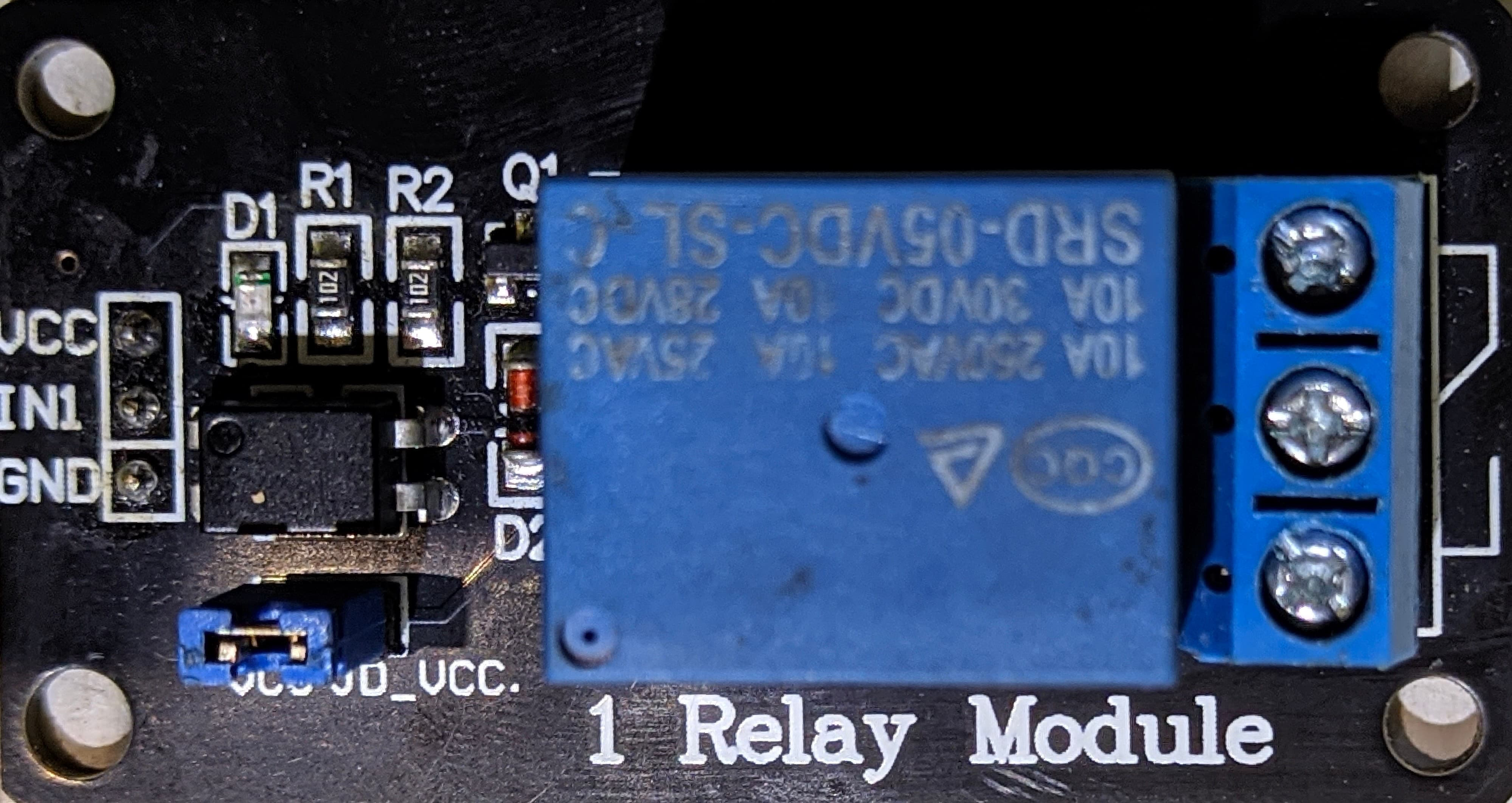
 Design with RELAY 1CH in Cirkit Designer
Design with RELAY 1CH in Cirkit DesignerIntroduction
The RELAY 1CH is a single-channel relay module designed to control high-power devices using a low-power signal. It provides electrical isolation between the control circuit and the load, ensuring safety and reliability in various applications. This module is widely used in home automation, industrial control systems, and DIY electronics projects.
Explore Projects Built with RELAY 1CH
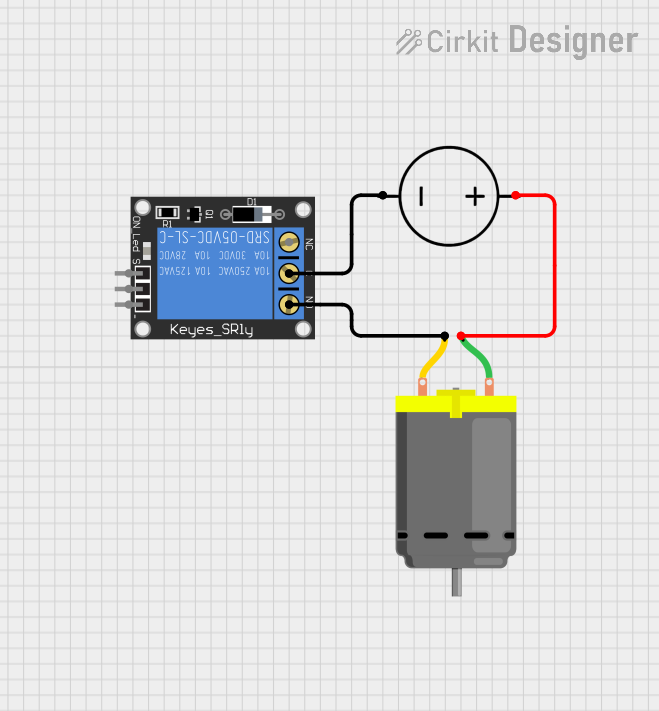
 Open Project in Cirkit Designer
Open Project in Cirkit Designer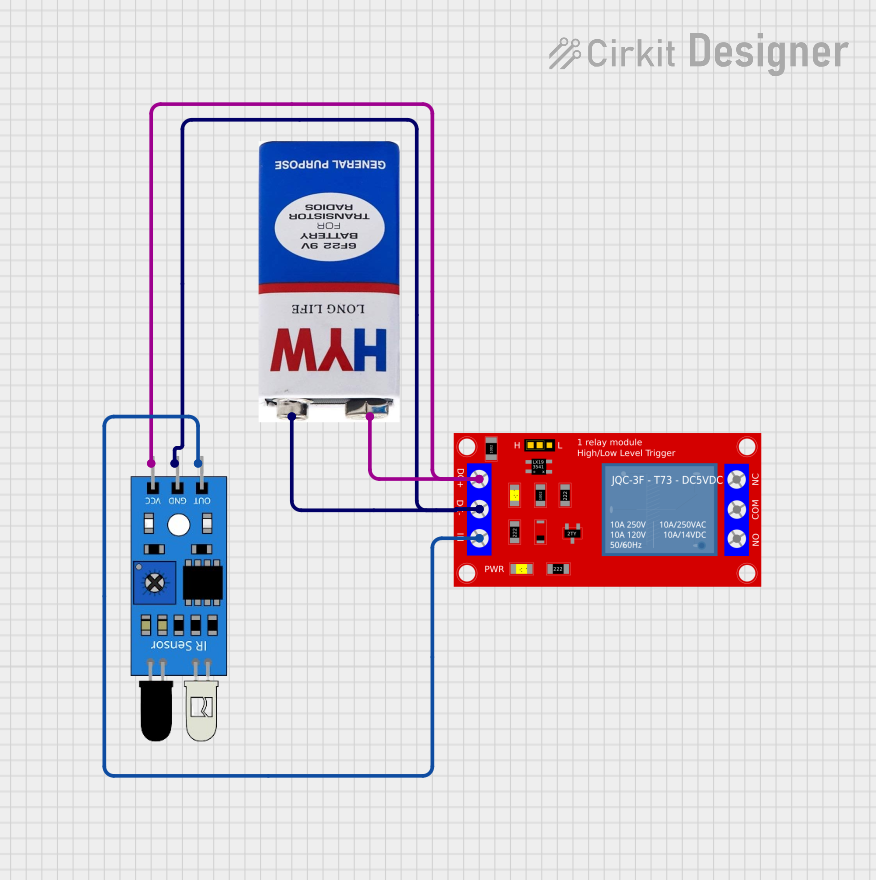
 Open Project in Cirkit Designer
Open Project in Cirkit Designer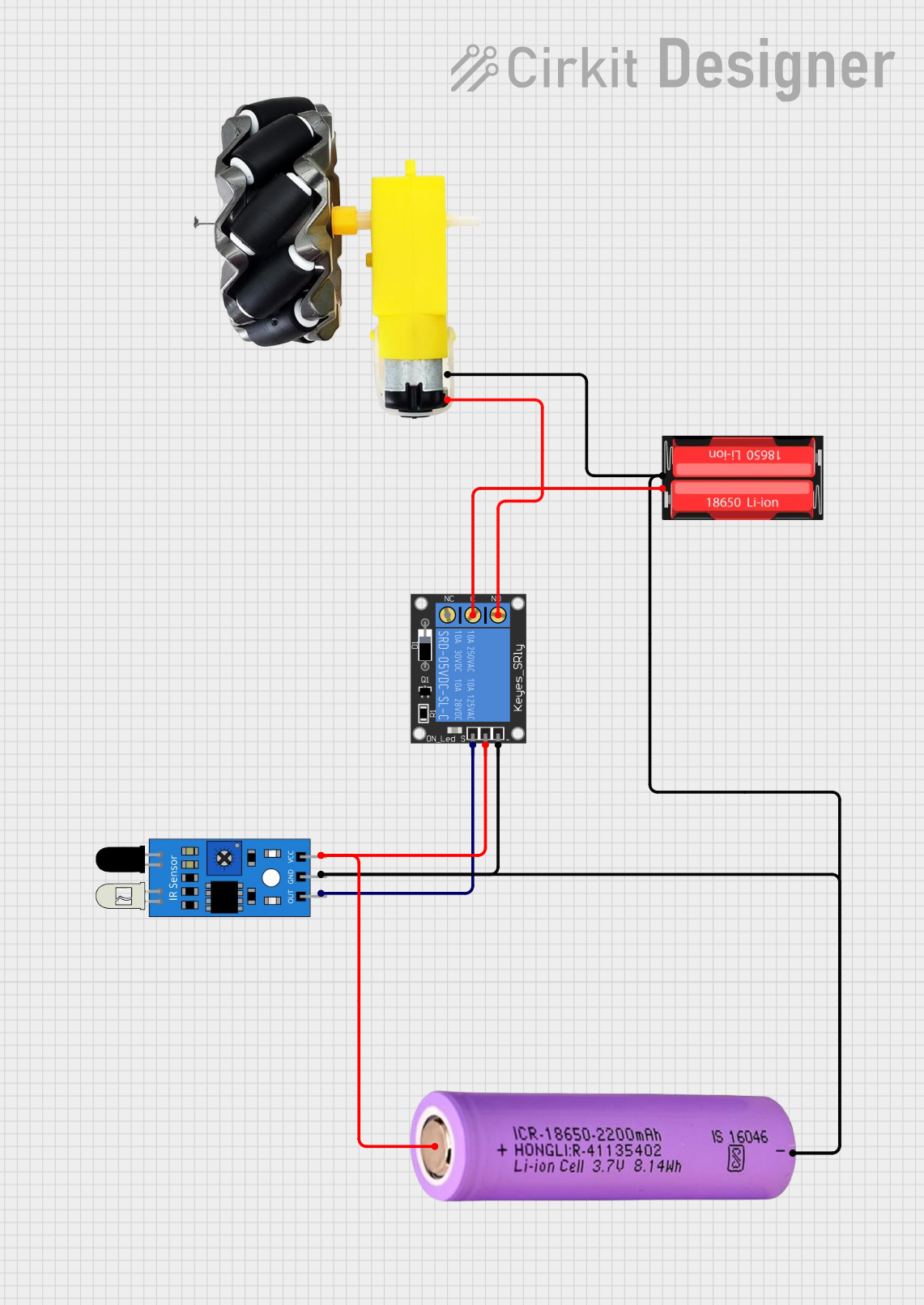
 Open Project in Cirkit Designer
Open Project in Cirkit Designer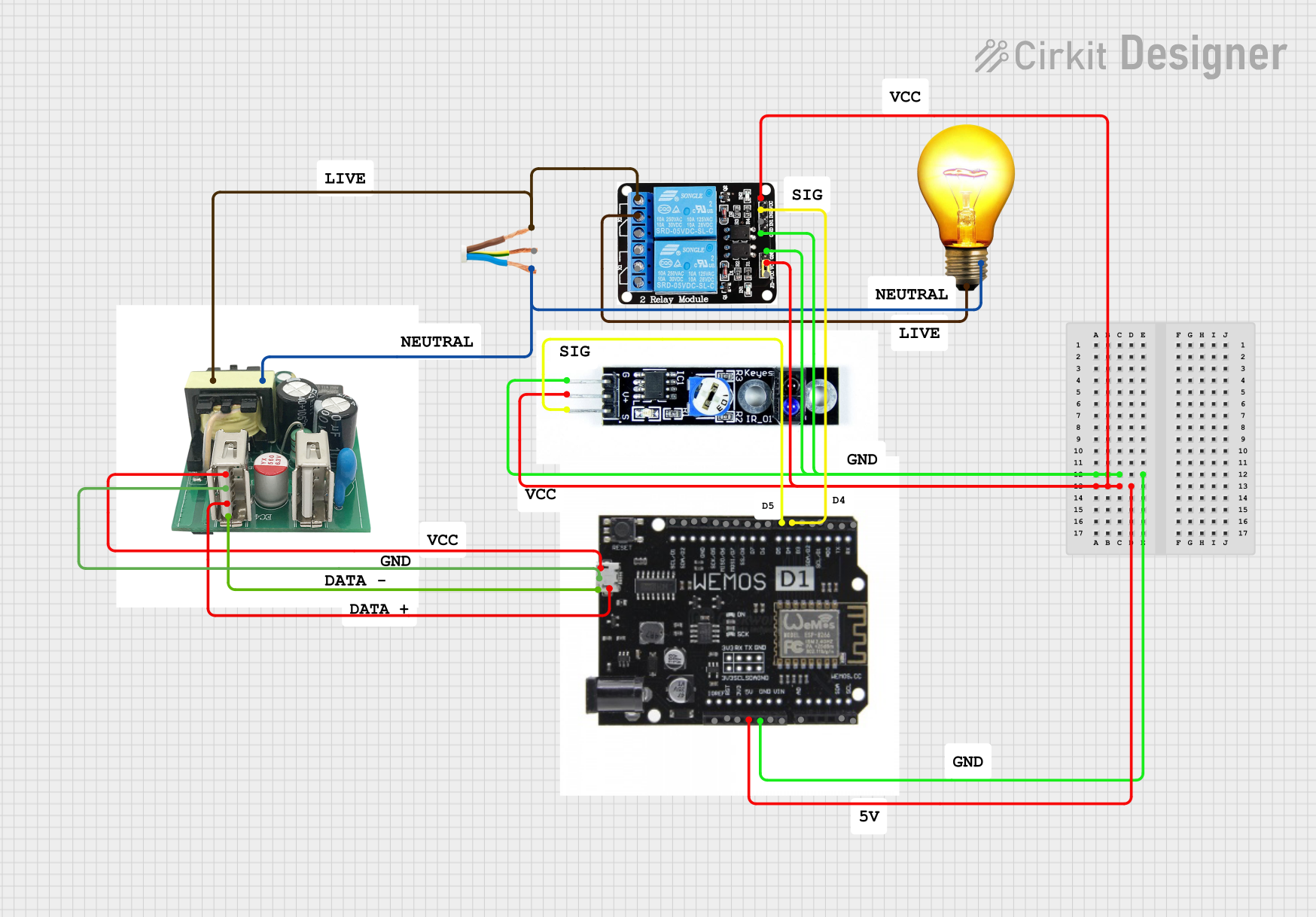
 Open Project in Cirkit Designer
Open Project in Cirkit DesignerExplore Projects Built with RELAY 1CH

 Open Project in Cirkit Designer
Open Project in Cirkit Designer
 Open Project in Cirkit Designer
Open Project in Cirkit Designer
 Open Project in Cirkit Designer
Open Project in Cirkit Designer
 Open Project in Cirkit Designer
Open Project in Cirkit DesignerCommon Applications and Use Cases
- Controlling high-power devices such as lights, fans, and motors.
- Home automation systems for switching appliances.
- Industrial equipment control.
- Interfacing microcontrollers (e.g., Arduino, Raspberry Pi) with high-voltage devices.
- DIY projects requiring electrical isolation for safety.
Technical Specifications
The RELAY 1CH module is built to handle a wide range of control and load requirements. Below are its key specifications:
General Specifications
| Parameter | Value |
|---|---|
| Operating Voltage | 5V DC |
| Trigger Voltage | 3.3V to 5V DC |
| Maximum Load Voltage | 250V AC / 30V DC |
| Maximum Load Current | 10A |
| Relay Type | SPDT (Single Pole Double Throw) |
| Isolation | Optocoupler-based electrical isolation |
| Dimensions | ~50mm x 26mm x 18mm |
Pin Configuration and Descriptions
| Pin Name | Description |
|---|---|
| VCC | Connect to the 5V power supply. |
| GND | Connect to the ground of the power supply. |
| IN | Control signal input. A HIGH signal activates the relay, and a LOW signal deactivates it. |
| COM | Common terminal for the relay switch. |
| NO | Normally Open terminal. Connect the load here if it should be OFF by default. |
| NC | Normally Closed terminal. Connect the load here if it should be ON by default. |
Usage Instructions
The RELAY 1CH module is simple to use and can be integrated into various circuits. Below are the steps and best practices for using the module:
Connecting the Relay
- Power the Module: Connect the VCC pin to a 5V DC power supply and the GND pin to the ground.
- Control Signal: Connect the IN pin to the control signal source (e.g., a microcontroller GPIO pin).
- Load Connection:
- Connect the load's live wire to the COM terminal.
- For a normally OFF load, connect the other wire to the NO terminal.
- For a normally ON load, connect the other wire to the NC terminal.
Example Circuit with Arduino UNO
Below is an example of how to control the RELAY 1CH module using an Arduino UNO:
Circuit Connections
- Connect the relay module's VCC to the Arduino's 5V pin.
- Connect the relay module's GND to the Arduino's GND pin.
- Connect the relay module's IN pin to Arduino digital pin 7.
- Connect the load (e.g., a light bulb) to the COM and NO terminals of the relay.
Arduino Code
// RELAY 1CH Example Code
// This code toggles the relay ON and OFF every 2 seconds.
#define RELAY_PIN 7 // Define the pin connected to the relay module
void setup() {
pinMode(RELAY_PIN, OUTPUT); // Set the relay pin as an output
digitalWrite(RELAY_PIN, LOW); // Ensure the relay is OFF initially
}
void loop() {
digitalWrite(RELAY_PIN, HIGH); // Turn the relay ON
delay(2000); // Wait for 2 seconds
digitalWrite(RELAY_PIN, LOW); // Turn the relay OFF
delay(2000); // Wait for 2 seconds
}
Important Considerations and Best Practices
- Electrical Isolation: Ensure proper isolation between the control circuit and the high-power load to prevent damage or hazards.
- Power Supply: Use a stable 5V DC power supply for the relay module.
- Load Ratings: Do not exceed the maximum voltage (250V AC / 30V DC) or current (10A) ratings of the relay.
- Flyback Diode: If controlling an inductive load (e.g., a motor), use a flyback diode across the load to protect the relay from voltage spikes.
Troubleshooting and FAQs
Common Issues and Solutions
Relay Not Activating:
- Ensure the control signal voltage is within the specified range (3.3V to 5V).
- Check the power supply connections to the relay module.
- Verify that the IN pin is properly connected to the control source.
Load Not Switching:
- Confirm that the load is connected to the correct terminals (COM and NO/NC).
- Check the load's power supply and ensure it is functioning correctly.
- Verify that the relay is activating by listening for a clicking sound.
Relay Stuck in One State:
- Ensure the load does not exceed the relay's maximum current or voltage ratings.
- Inspect the relay module for physical damage or burnt components.
FAQs
Q: Can I use the RELAY 1CH module with a 3.3V microcontroller?
A: Yes, the module can be triggered with a 3.3V control signal, but ensure the power supply to the module is 5V.
Q: Is the relay safe for switching high-power devices?
A: Yes, the relay is designed for high-power devices up to 250V AC or 30V DC at 10A. However, always follow safety guidelines and ensure proper isolation.
Q: Can I control multiple relays with one microcontroller?
A: Yes, you can control multiple relays by connecting each relay's IN pin to a separate GPIO pin on the microcontroller.
By following this documentation, you can effectively use the RELAY 1CH module in your projects while ensuring safety and reliability.